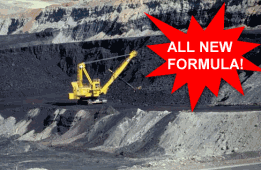It’s been a rough few months for the clean coal, newgencoal, futuregen or “new generation coal” lobby; depending on what country you are in.
Much of the hoopla and hype targeted towards the general public originating from the industry has died down after repeated attacks over the viability or even possibility of such a fuel; with many commentators calling clean coal an oxymoron.
It seems most of the public comments supporting it in Australia are coming from politicians these days, who no doubt have been subjected to intense lobbying occurring in the safer, hallowed halls of Parliament House and MP offices.
The Clean Coal brigade certainly can’t be accused of not trying their best to promote their product in a better light to the public. From name changes to the widely ridiculed “CO2: we call it life” and the “clean coal carolers” campaigns, to the pro-coal rally in the USA earlier this week that reportedly attracted somewhere between 4 and 30 people; they’ve done their utmost, spent a lot of cash and some would say – miserably failed.
Clean coal has been up against some pretty tough opponents – including high profile scientists, celebrities, Al Gore and one of the world’s most respected authorities on climate change – Dr. James Hansen, who labelled coal fired power generation facilities as factories of death. Every time a new look or angle has been launched by the industry, dozens of environmental groups have raced in to pick over it, exposing what they say are flaws and inconsistencies.
The sticking point that has particularly raised the ire of so many groups has been not so much the concept of low emission coal technologies, but that it would lead to a business as usual scenario for the industry instead of part of a commitment to totally phasing out the fossil fuel for power generation in favour of renewable energy technologies.
Some environmentalists have warned that carbon sequestration, the burying of carbon dioxide emissions, over a long period is risky and unproven. Other low emissions technologies also involve the burning of more coal to provide the energy required for scrubbing – more coal means more mining.
Another nail in the Australian clean coal coffin was hammered home yesterday when oil and gas company Santos effectively effectively shelved a $700 million project to sequester (store) huge quantities of carbon dioxide underground in the outback of South Australia. The project would attempt to store carbon gases captured from coal-fired power stations in the eastern states.
According to an article on Adelaide Now, Santos had planned to store 20 million tonnes a year of carbon dioxide for 50 years – the equivalent of taking five million cars off the roads. Santos says that the controversial process of carbon sequestration relies on a certain oil price and a certain carbon price to make it a viable project – and neither element is occurring at present.
It would seem that for clean coal to get the public’s ear and favour would mean nothing short of surrendering to the fact its days are numbered and for it to embrace the wave of clean power options such as wind energy and solar power; transforming themselves from perceived harbingers of death and destruction and joining forces with the renewable energy revolution.












































